Innovation
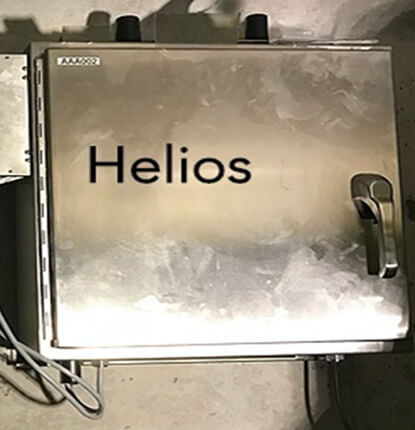
Helios Communications
Helios Communications Two-way communications between the user and the remote monitoring system is crucial. Our systems use the newest purpose-built cellular modems with such features as; Less than 1W current draw for solar applications. State-of-the-art LTE coverage spanning 21 LTE frequency bands worldwide. Fully automatic network operator switching. Remote configuration, software update, and cloud-based monitoring Dual-SIM functionality to enable automatic failover between SIMs (CANADA/EMEA/.APAC) Helios Cellular Modem offers real-time onboard data processing. Its dual-core processor provides added performance for advanced edge computing applications. It also offers GPS location for asset tracking.
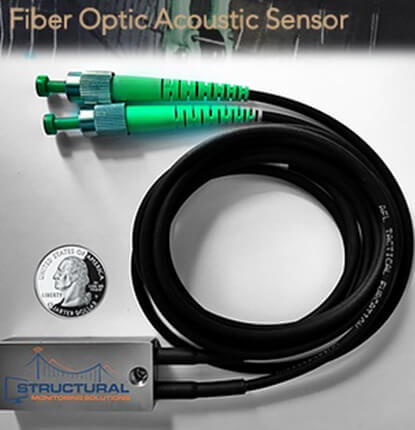
Echo-AE | True Acoustic Sensor
Traditional acoustic sensors use piezoelectric (PZT) crystal, our fiber optic acoustic sensors use a mirror, which vibrates when a sound wave hits it. The vibrating mirror reflects a high-power laser, instead of a PZT (piezo-electric) crystal generating a micro-voltage The Echo-AE is more sensitive than PZT, and can detect wire breaks from a greater distance so fewer sensors are required SMS uses a patented Fabry-Perot interferometer design According to a VDOT study, our sensor technology is 20 times more sensitive to in-plane wire breaks allowing easy mechanical filtering of extraneous traffic or rail noise. Traditional PZT Sensors are omnidirectional and cannot discreetly spatially filter background noise. This is NOT a strain based distributed sensor technology but a real-time acoustic sensor Multiple Sensors can be installed on one channel or one fiber of a multicore FO cable. Follows ASTM procedures and NIST traceability standards.

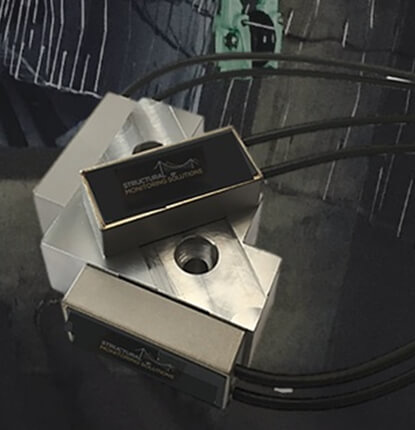
Tri-Axial Accelerometer
These sensors can be used as a replacement for conventional accelerometers while offering the added benefits of EMI immunity, robust packaging, and lightning/corrosion resistance. Specifically tuned to address challenging environments, the Echo-AE family of sensors provides the user the ability to accurately measure vibrations with frequency ranges up to 350 Hz, and with the highest level of sensitivity from the industry leader in optical measurement technology.
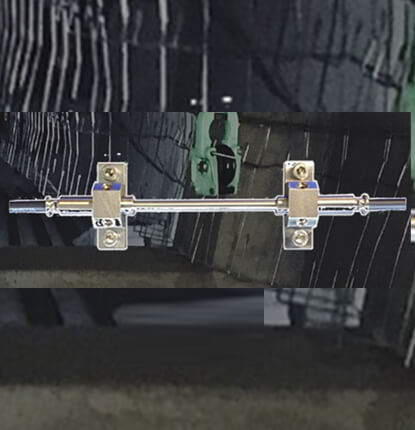
Surface Mount Strain Sensor | SMS-3510
The SMS-3510 is intended exclusively for surface mounting. Each end of the SMS-3510 is attached to the structure via rigid brackets that are either welded, bolted, epoxied, or grouted to the surface of a concrete, rock, steel, composite, or other structure. A rugged, stainless steel body, ruggedized cables and optional connector protection fittings make the SMS-3510 suitable for harsh environments. Two FBGs are well protected inside the SMS-3510 body. One FBG measures strain, and the other provides for integrated temperature compensation. Since there are no epoxies holding the fiber to the carrier, longterm stability is ensured by design.

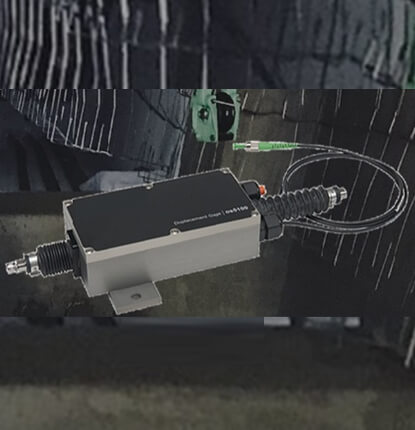
Displacement Gage | SMS-5100
The SMS-5100 is specifically designed to measure displacement between two gauge points on a specimen surface. The gage design is flexible enough to allow for easy attachment to various substrates, making measurements on metal, concrete and other surfaces straightforward. The two FBG sensors that comprise the SMS-5100 gauge are located within the rugged hard-coat anodized aluminum enclosure which shields them from the elements and allows for installations in harsh environments. This gauge can be used alone or in series as a part of an FBG sensor array (which may include strain and temperature gauges, accelerometers and other displacement gauges. Cabling for such arrays is much less expensive and cumbersome than comparable electronic gage networks.
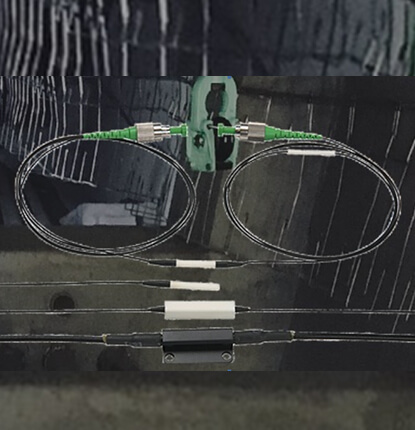
Non-metallic Temperature Sensor | SMS-4300
This sensor is housed within a sealed, alumina ceramic tube that is designed to make handling easy and sensor installation fast and repeatable. It is based on fiber Bragg grating (FBG) technology and since there are no epoxies holding the fiber to the tube, long-term stability is ensured by design. Inside by side comparisons with conventional thermocouples, the SMS4300 is equally sensitive and accurate, while providing sub-second response time, wider operating range, no calibration, and no EMI noise. The SMS-4300 temperature sensor is qualified for use in harsh environments and delivers the many advantages inherent to all FBG based sensors.

